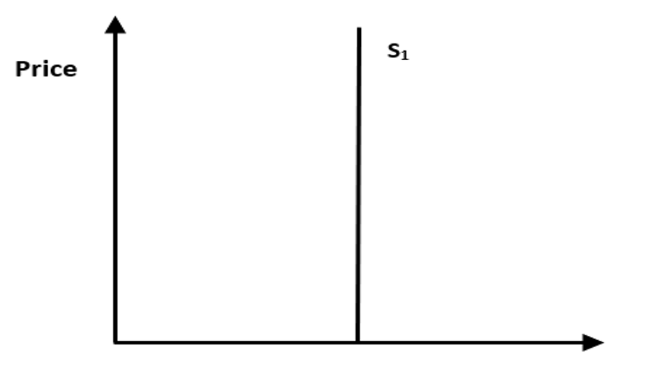Learning Outcomes for Demand and Supply
- Define demand, market demand, individual demand
- Define effective demand, derived demand
- Define law of demand
- Explain 3 exceptions to law of demand
- Explain why demand curve slopes downwards
- Distinguish between a shift and movement in the demand curve
- Explain what an inferior good is
- Explain what a complementary good is
- Define supply
- Distinguish between individual demand and market demand
- Explain the law of supply
- Distinguish between a shift and movement in the supply curve
- Draw and explain 3 other types of supply curves
DEMAND: LAW OF DEMAND
Demand curve and law of demand
- The Law of Demand states that an increase in price leads to a decrease in quantity demanded, or a decrease in price leads to an increase in quantity demanded.
- For Example, If the price of a bar chocolate increased by 5c per bar then quantity demanded or purchased would fall.
Why demand curves slope downwards:
Remember the Law of demand states that as the price of a good falls, the quantity demanded will normally increase.
Exceptions to law of demand
- Snob good / Veblen good: A good that is attractive to some consumers because it is expensive. A rise in price will cause an increase in demand and a fall in price will cause a fall in demand.
- Giffen good: As the price falls, real incomes increase and consumes buy less of these goods and purchase more of better quality goods. As the price rises consumers have less income to spend on other types of goods so they tend to devote more of their income to these goods.
- Speculative good: Good go up value/price in future. Have to buy it now.
DISTINGUISH BETWEEN A MOVEMENT & SHIFT OF DEMAND CURVE
MOVEMENT: PRICE CHANGE
A change in the price of the good itself will cause a movement along the demand curve (all other things being equal) and this is referred to as a change in the quantity demanded.
The Law of Demand states that an increase in price leads to a decrease in quantity demanded, or a decrease in price leads to an increase in quantity demanded.
For Example, If the price of a bar chocolate increased by 5c per bar then quantity demanded or purchased would fall.
SHIFT:ALL OTHER FACTORS (NON-PRICE)
A change in any of the factors other than price will cause the demand curve to shift and this is referred to as a change in demand, at any given price.
Shift: A change in any of the other Six conditions leads to a shift in the demand curve.
- Future Expectations
- Unplanned Events
- Change in price of Substitute good
- Change in consumer Taste / preferences
- Income Levels
- Change in Price of Complementary goods.
Read the article and answer the questions:
Questions
- Define key economic terms in the article.
- With the aid of a diagram, explain what has happened to the demand for houses.
- Explain two in which the government can intervene in the market to reduce housing crisis.
SUPPLY
MOVEMENT ALONG A SUPPLY CURVE
A change in price leads to a movement along the Supply Curve. Changes in anything else leads to a shift in the Supply Curve
SHIFT IN SUPPLY CURVE
The following factors causes shifts in a supply curve
- The Cost of producing the product.
- Unplanned factors.
- The state of the firm’s production TEchnology
- Number of Sellers in the industry.
- Taxation / Subsidy
TYPES OF SUPPLY CURVES
Key words
- Inferior good: A good with a negative income effect. A rise in income causes less of it to be demanded while a fall in income causes more of it to be demanded.
- Complementary goods: are in joint demand. The use of one involves the use of the other.
- Joint Demand: is where two (or more) goods are used in conjunction with each other in order to achieve utility. They are complementary goods, for example, golf clubs and golf balls.
- Individual Demand: The quantity of a good an individual consumer demands at different prices
- Market Demand: The total quantity of a good that all consumers demand at different prices
- Effective demand: Effective demand is demand supported by the necessary purchasing power.
- Derived demand: Where a factor or production is demanded not for its own use but for its contribution to the production process.
- The supply of a good/service is the total quantity which is made available at any given price over a specific time period.
- Individual Supply: The quantity of a good an individual firm is willing to supply at different prices.
- Market supply: The total quantity of a good that all firms are willing to supply at different prices.


